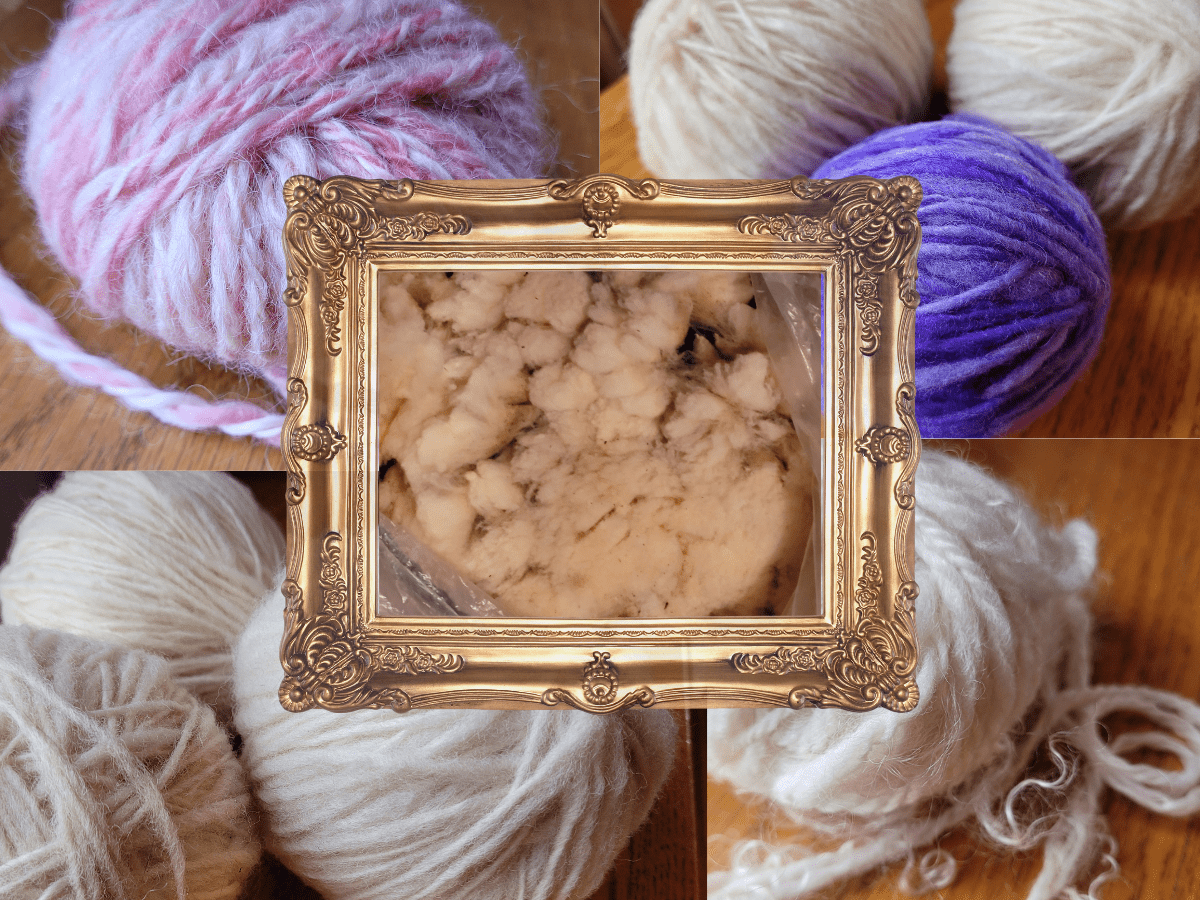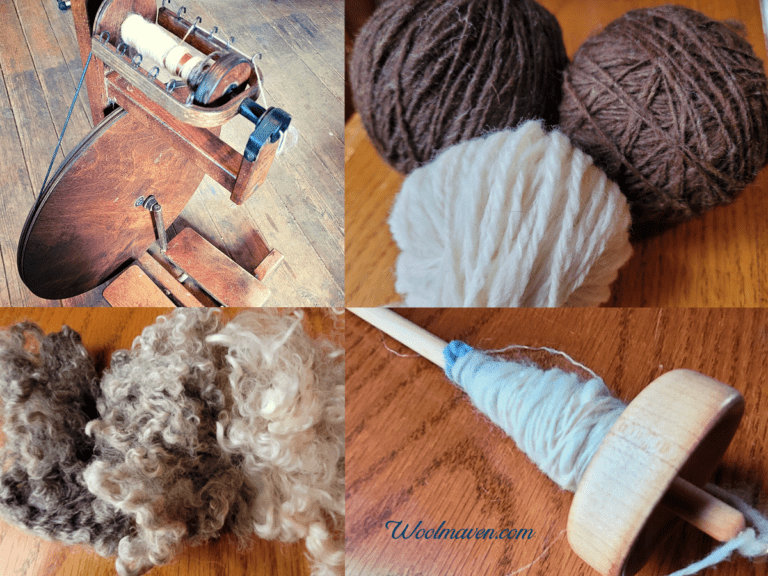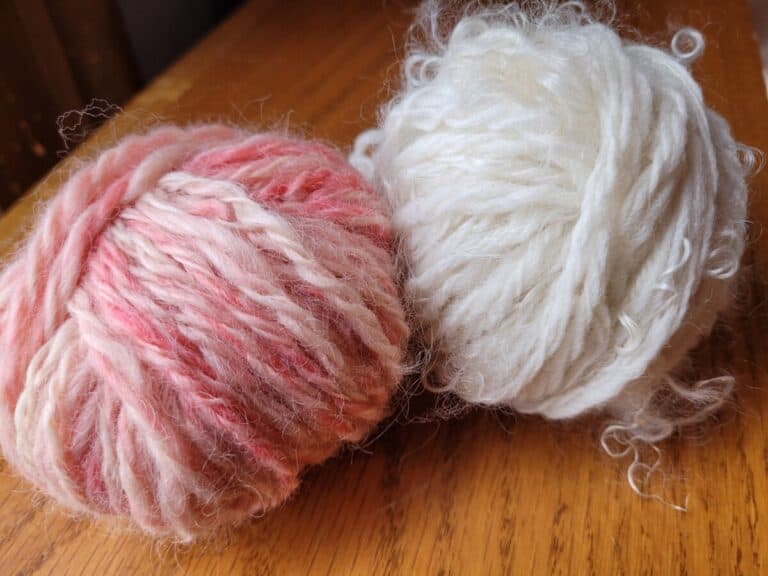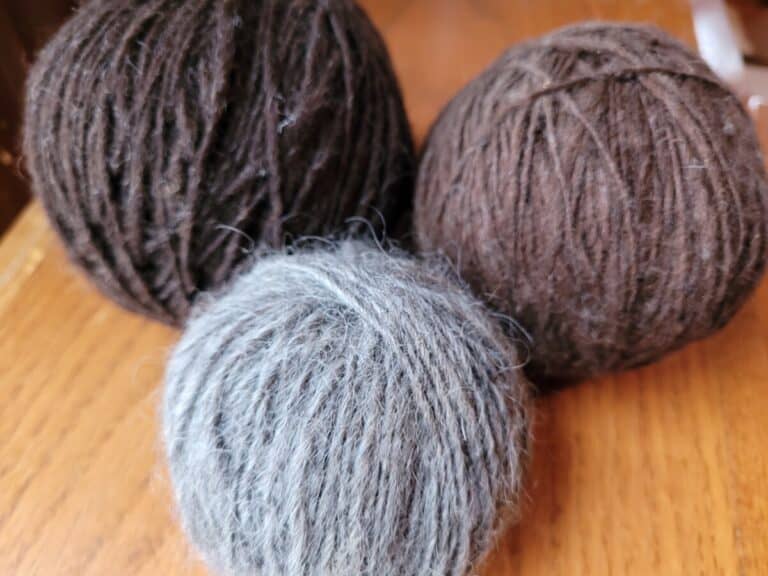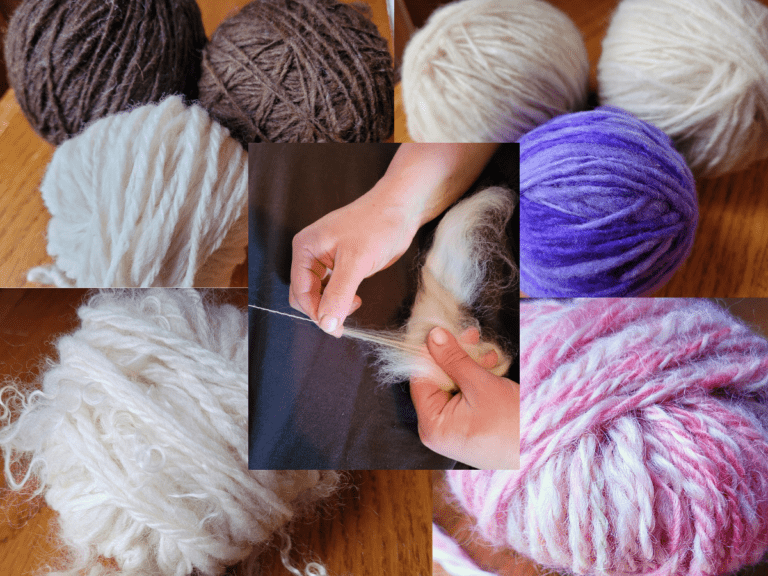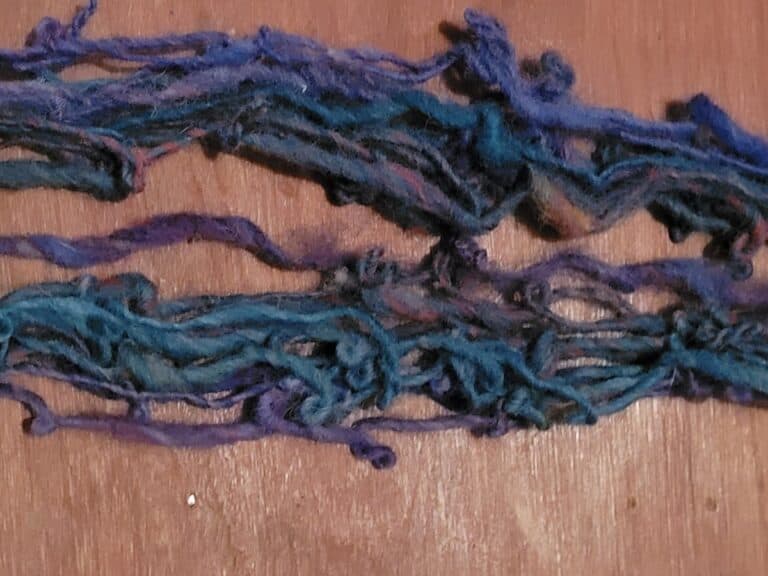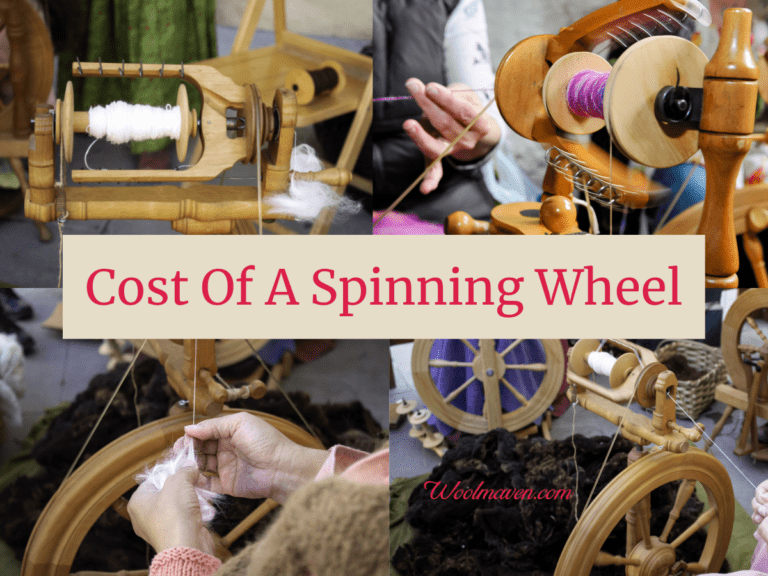How Much Yarn Can You Spin From One Sheep’s Fleece?
Looking to start your spinning project with a raw fleece, but not sure how much yarn you’ll be able to make from it?
No problem, with a little bit of math, you can figure up the amount of yarn you are likely to be able to produce from your wool, no matter the initial weight of the fleece!
The amount of yarn you can get from a raw fleece is approximately 64% of the clean wool yield. This varies with condition of the fleece and how much processing it took to get it into spinnable fiber, since each processing step results in loss of total wool weight.
Should You Buy A Raw Wool Fleece? goes over the pros and cons of buying an entire fleece!
About 64% of scoured fleece weight is spinnable
I did some math and seem to end up with about 64% of the scoured fleece weight ends up as spinnable fiber. I’m sure you are thinking “what, I thought the only loss was grease!”
Grease is not your only loss of fiber weight
I mistakenly thought you could spin all of your clean wool yield, easy peasy, but no, that’s not the case, at all!
I asked the folks from Zeilinger Wool Co. (at the Great Lakes Fiber Show) and they explained to me that it’s hugely variable about much more than grease!
What I didn’t realize is that every time the fiber is run through their machines, even after washing, there is loss. This makes complete sense!
The machines are sorting off the things you don’t want, which drops the weight of the resulting spinnable fiber you get or have made into yarn.
The more things that you have in the wool that you ask to be sorted out, the more total loss you will have as the machines pull out the inferior parts of your wool.
If you want to get a higher percent of your fleece back, you can choose a less selective option for processing. For instance, send a clean, low grease fleece and have it made into roving.
If you are sending a high grease fine wool that has less than great staple length or a weak staple, you’ll have a high percentage of loss due to the more challenging fleece you sent in.
Home processing of wool has the same losses
Even if you are processing your own fleeces at home, you’ll still have these same levels of loss each time you do another processing step.
I have been figuring about 20% loss at each step.
This means that if you start with a 10 pound fine wool fleece that is 50% grease, you’ll end up with a clean wool yield of 5 pounds.
When you card that 5 pounds, you’ll lose another 20%, which takes you down to 4 pounds.
When you spin that fiber, you’ll lose another 20%, remember you are going to be picking out noils and any VM (vegetable matter) that made it through carding.
This leaves you with 3.2 pounds of wool that made it into yarn.
3.2 multiplied by 16 (there are 16 ounces in a pound) is 51.2 ounces. Divide 51.2 by 2 (two ounces per skein) to get 25.6 skeins of yarn from this fleece.
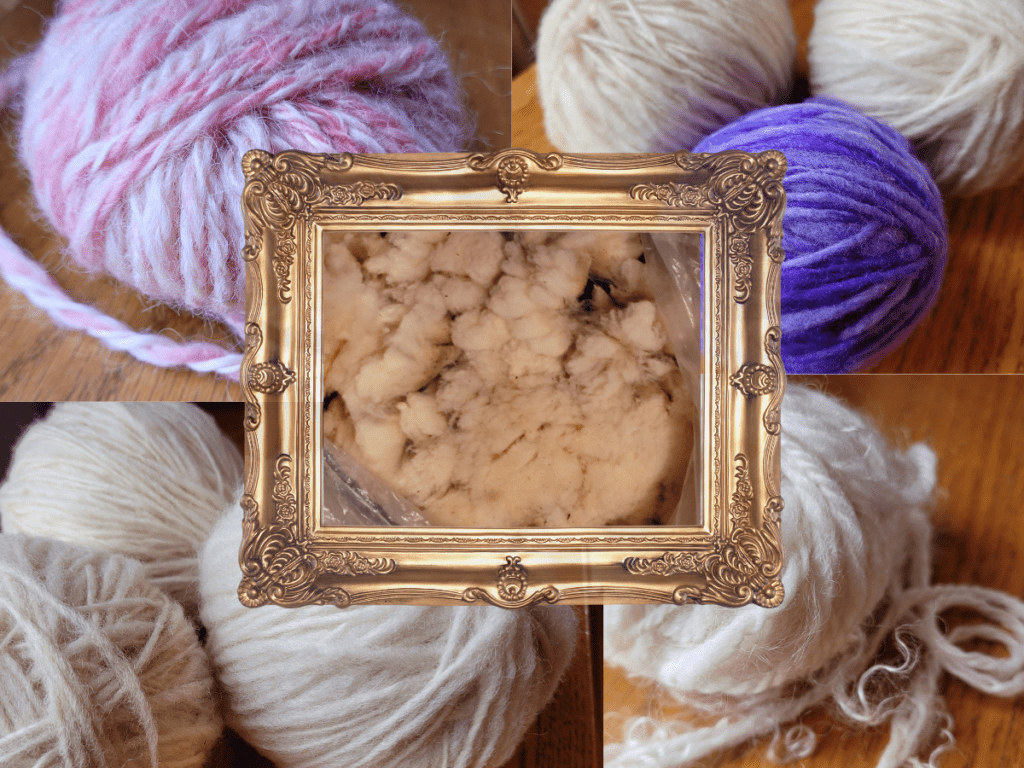
Find your breed’s clean wool yield
All fleeces will lose some of their starting weight to grease. The amount of grease in the wool will be anywhere from 25-70%!
This means that in a very low grease fleece, you’ll have 75% of your weight remaining after scouring, but with a very high grease fleece, you can have as little as 30% wool yield after scouring.
Look at the wool chart from New Mexico State University, you’ll have to scroll down a bit to find it, and see the wool yield range for the breed of sheep’s wool you are working with.
This chart also has micron range and average grease weights for fleeces, so if you are thinking about getting a fleece online, you can determine the amount of fiber you’ll have to spin before you buy it.
There is quite a variety in the amount of wool that is left over in a fleece after it has been scoured.
Plan on at least 30% of the raw fleece weight being lost in washing if you have a low grease medium wool and more like 50% for a fine wool (extremely greasy fine wools will be more).
How To Choose A Wool You’ll Like To Spin gives you some tips on picking out your fiber, which is especially important if you are getting the whole fleece!
Take off the % grease weight
Now you need to take off the percent of grease weight that will be gone after scouring.
Go with 30% for medium wools and 50% for fine wools, unless you find a more suitable number for your fleece based on the chart from NMSU linked above.
For example:
Let’s say that your raw fleece is a 9 pounds and from a Merino that has good fiber integrity (no weak spots) and is not overly greasy or dirty.
The wool yield for Merinos is going to be from 30-70%, so we’ll be optimistic and use 50% yield, which is a 50% grease, since this fleece is only moderately greasy.
When scoured, this 9 pound fleece will lose 50% of it’s weight in grease, so the washed and dried fleece will be 4.5 pounds.
Take 64% of the scoured wool weight
Take your 64% of the scoured wool weight to get your likely total yarn weight from this fleece.
For this fleece, 64% of 4.5 is 2.88 pounds, which is 46.08 ounces total of clean wool to spin.
Divide total ounces by 2 to get number of skeins
To get the number of skeins that you will be able to get from this amount of scoured wool, you’ll need to divide by the weight of the skeins you usually spin. This example is 2 ounce skeins.
If you are spinning into 2 ounce skeins, you’ll need to divide that 46.08 by 2 to get the number of skeins you’ll be able to spin from this fleece.
46.08 ounces divided by 2 ounces per skein=23.04 skeins of yarn
Of course, if you are planning to spin a different sized skein, adjust your math accordingly.
Some folks like to spin 1 ounce skeins and other folks, especially anyone making more of an art yarn, tend to spin to a certain length, rather than weight.
Do which ever one works better for you and your project.
Use this formula if buying fleeces or paying for processing
If you are buying fleeces or paying for a fleece to be processed (maybe both!), you’ll want to run through these number to see what you are getting into, price wise.
This is especially true if you are working with a whole fleece, rather than purchased ready to spin roving, in order to save money on your spinning fiber.
For example, let’s say you decide to purchase a really great looking Romney fleece that you found on Etsy and you want to know what is the likely wool yield.
Well, your best guess is going to be somewhere around 60-65%, with the possible range of 55-70%.
For easy math, we’ll use a 10 pound raw fleece weight, so you are likely to end up with 6-6.5 pounds of scoured fiber from this fleece.
The possibilities of wool yield are anywhere from 5.5 for a very greasy fleece to 7 pounds for a fleece with little grease, but the most likely weight will be 6-6.5 pounds.
Take 64% of the clean weight to figure your cost of spinnable wool. 6-6.5 pounds of clean wool will end up as 3.84-4.16 pounds of spinnable wool.
If that fleece costs you $90, then the spinnable fiber from that fleece is $21.64-23.44 per pound, with you doing the washing and processing, like carding or combing, at home.
This is $2.70-2.93 for the washed fiber you will be spinning per 2 ounce skein.
Now we are getting somewhere. If you just want to spin, compare the price of ready to spin roving per ounce and see if buying and processing your own fleece is worth it to you.
If you are planning on paying for processing, just washing and putting the fleece into roving, it seems to come out to about $20 per pound, so that’s $5.00 per 4 ounce bump of roving or $1.25 per ounce.
Remember, this $1.25 per ounce of roving is just the mill fees, shipping both ways and the purchase of the fleece also need to be added into the price.
Zeilinger Wool Company has an informative brochure on pricing for processing wool.
Of course there are many other fiber mills you could use, this is the one I am familiar with and is popular with folks in my area.

